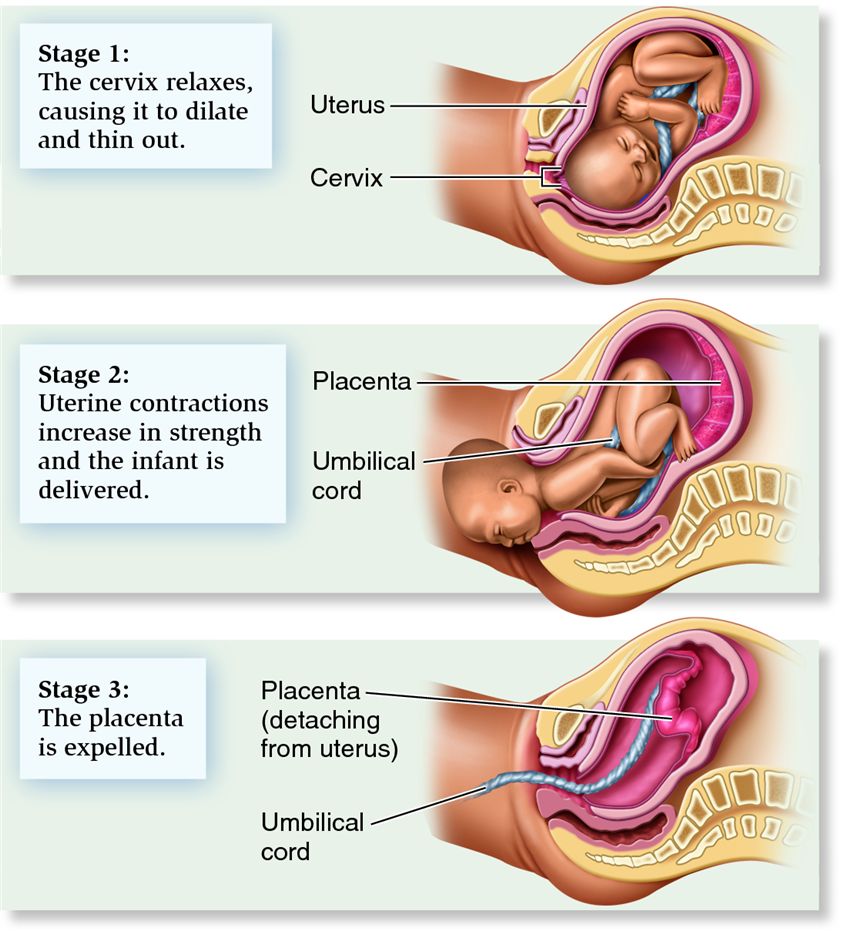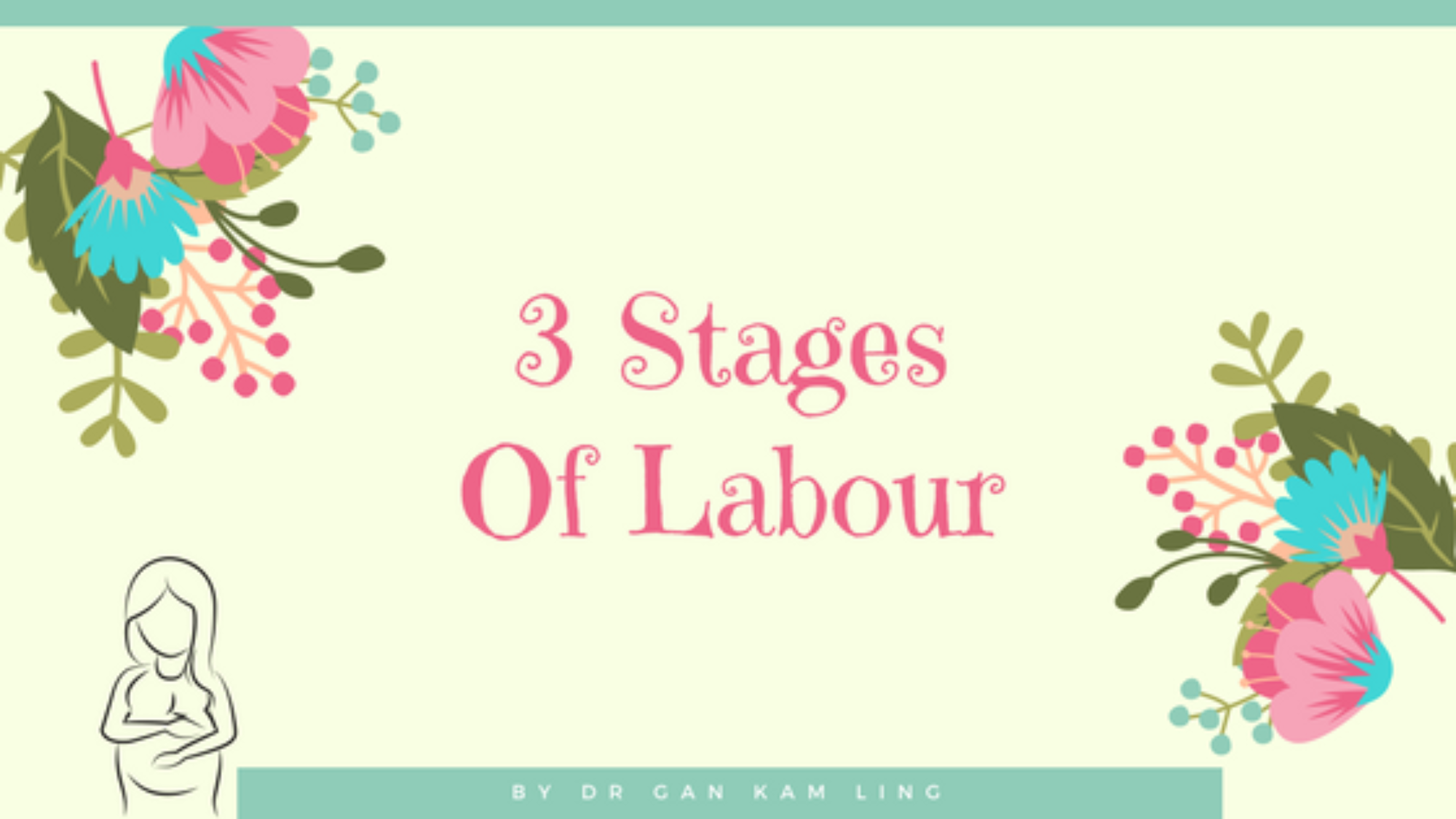There are three stages of labour. The first stage is when your cervix is opening and your baby is moving down the birth canal. The second stage is when your baby is being born and the third stage is when the placenta is delivered.
Understanding the stages of birth can help you know what is happening during your labour and help you keep calm during the delivery.

This stage begins when the cervix starts to soften and to open. The first stage is complete when the cervix has opened to around 10 centimetres.
In the very early stages of labour, your cervix softens and becomes quite thin. This can go on for hours; days even. During this early stage, you may feel nothing at all for some time. Eventually, you might feel some pain and discomfort but there is no pattern and the contractions are irregular.
In early labour you may have:
- A blood-stained mucus discharge called a ‘show’
- Lower back pain
- Period-like pain that comes and goes
- Loose bowel motions
- A sudden gush or a slow leak of fluid from the vagina when your waters break or your membranes rupture. The ‘waters’ should be clear or slightly pink. (A greenish or bloody colour can indicate a problem with the baby and you will need to see a doctor or contact your hospital immediately)
- An urge to vomit (it is quite common to vomit during labour).
In early labour, your body is preparing for birth. Things you can do:
- Have regular snacks so that you are building your energy reserves (Try not to have a full meal as you tend to feel nauseated and it might cause you to vomit)
- Rest as much as possible; if it’s night time try and sleep
- Try relaxing in a bath or a shower
- Go to the toilet regularly and empty your bowels if you can.
Eventually, towards the end of the first stage of labour, you will start feeling a little more restless and tired and your pain will become more intense. The pain will come like waves, starting small and build to a climax and then fall away again. As you move closer to the second stage, the time between each wave will be smaller.
When to go to the hospital
It’s not always clear whether labour has started. If you’re not sure or you are worried, call your hospital or doctor. Sometimes just the process of talking through your symptoms is enough to help you relax.
The doctor will ask you how and where you feel your contractions, how often the contractions come and how long they last. This will help them to know how much your labour has progressed.
If there are strong signs of labour, such as your waters breaking, regular contractions or blood loss, go to the hospital immediately.
Here is a previous page post we wrote that explained the signs of labour. Click on this link to read more
When you are at the hospital the doctor or nurses will keep a constant check on your baby during labour.
They will check the baby’s heartbeat and any other signs that the baby might not be well. The level of monitoring will depend on your medical history, whether there are any problems with your baby or whether there are any expected problems with the birth. Monitoring can be done in a number of ways.
Here at Gleneagles, we use continuous external monitoring as well as internal vaginal examination.
An electronic monitor is attached to a belt around your abdomen. The monitor continuously records the baby’s heartbeat and any contractions on a paper printout. Some monitors restrict your movement. If this concerns you, ask if there’s one available that lets you move around.
The second stage

The second stage describes the period of time from when the cervix is fully dilated to when the baby is born.
In the second stage you may have:
- Longer and stronger contractions, with a one to two-minute break in between
- Increased pressure on your bottom
- The desire or urge to push
- Shaky cramps, nausea and vomiting
- Stretching and burning feelings in your vagina.
Things you can do in the second stage:
- Try to let go and allow your body to do what it needs to do
- Try different positions – sitting, standing or walking
- If you feel hot, a cold face washer can be very soothing
- Try a bath or shower to help you to relax and to manage the pain
- Keep up your fluids and rest when you can.
- Concentrate on your contractions and rest in between
If you want to read up on pain relief during labour, click here.
Pushing
When the urge to push arrives it can be overwhelming. The pushing phase varies for each woman but can last for up to two hours, usually less if you have had a baby before. Aside from the urge to push, you are likely to feel:
Pressure, and a strong urge to go to the toilet
Stretching and burning in your vagina
The baby’s head moving down.
The best thing you can do during this phase is to try and breathe deeply, relax and follow your body’s urge to push. Trust and listen to your doctor who will guide you.
Sometimes labour doesn’t go as planned and your baby will need help to be born. Help can involve relatively simple procedures like breaking the membranes (waters), to more medically demanding procedures such as caesarean section.
Here Is an article about emergency c-sections.
While some women have a preference for assisted births, others prefer to have no interventions at all. From a medical perspective, interventions are only introduced when they are likely to preserve the health of the mother or the baby. You can read up on assisted births here.
The third stage

The third stage begins after your baby is born and finishes when the placenta and membranes have been delivered.
In the third stage you may have:
- More contractions to expel the placenta
- A feeling of fullness in your vagina
- The doctor will usually pull on the cord to deliver the placenta
If you need advice the 3 stages of labour, please feel free to schedule an appointment to see Dr. Gan.
— Dr.Gan Kam Ling
Consultant Obstetrician And Gynaecology




Add a Comment